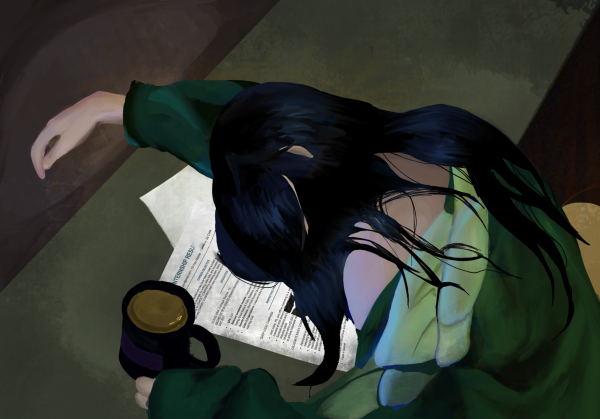Removal of Seconds on Clocks Detrimental and Unnecessary
Recently, changes to the digital clocks present in classrooms have been noticed by students. As of January 4, the clocks installed in all classrooms on campus no longer display the seconds next to the minutes. This may seem like a very minor change, but students have definitely begun to realize how much of an impact this adjustment has made on our time spent in class.
To start off, tests and quizzes frequently occur in class. Time restraints are often used during exams to evaluate how fast a student can apply concepts to the questions, as well as their level of comfort with the material. With many timed tests being under 60 minutes, students are often found stressing out about the speed at which they are moving through the test; whether or not they have spent too much time on one problem. During those last few minutes of tests, it is especially helpful to know how many seconds are left in each minute; a full 60 seconds is very different from a mere 5 seconds.
The lack of seconds on the clocks can definitely make the test-taking experience a lot more stressful, especially for students who rely on it to pace themselves in class.
Another common use of the seconds feature on the clocks is the timing of in-class activities such as debates, oral presentations, or partner discussions by teachers. We have observed that many of our teachers rely on the seconds to set a pace for the class in a similar way to how students do. This simple feature prevents teachers from having to use their phone or another device to time in class activities. With the large amount of material covered in classes, things are often scheduled down to the second. Without this strict timing, fewer curricular topics can be covered in class, resulting in students having more homework.
The display of seconds on the clock not only benefits the students, but can make class easier to manage for the teachers as well.
The seconds on the clock prove to be helpful at the end of class as well. When teachers are trying to regulate when to allow students to pack up, the seconds are a useful tool. No student wants to be let out late, and no teacher wants to feel rushed during the last few minutes of class. While a student is likely able to pack up their stuff in 30 seconds, they probably can’t do it in 5. Whether the class is before lunch or a short passing period, letting a student out late can mess up their schedule.
Being able to look at the clock for guidance on when to release students from class is beneficial for teachers and students. Just a few seconds can dictate whether a student is able to walk stress-free through the halls, or has to scramble to their next period.
Additionally, students have heard administration complain about students being let out early from their classes. Teachers see 1 minute left on their clock and think it is the right time to let their students out. However, this causes consequences for both students and teachers. If teachers knew that there was 10 seconds left in the minute, they could allow the students out early. But, because teachers aren’t able to see the actual seconds left, they could let students out 55 seconds early instead, causing an abundance of time for students to roam around and possibly disrupt other classes.
Showing the seconds on the clock allows for teachers and students to wrap up their classes smoothly.
Finally, and arguably the most important reason for bringing back the seconds on the clocks, is there was no valid reason to remove them in the first place. Taking the seconds off the clock has not benefited a majority of the school, which should be an indicator that it really wasn’t necessary in the first place. It is unfair to claim that displaying the seconds is distracting for all students, when in many cases, it serves as a helpful tool for students as they navigate class.
Before the removal of the clocks, a few teachers were observed taping the seconds off of the clock in their classrooms. This is a perfect solution for teachers who are bothered by the seconds, rather than getting rid of them altogether. Overall, the positive aspects of the seconds on the clocks outweigh the few complaints from a miniscule number of administrators.
Your donation will support the student journalists of Campolindo High School's The Claw. Your contribution will allow us to produce more issues and cover our annual website hosting costs.

Freshman Ruthie Stoll is a dancer, tennis player, and foodie. She grew up in a small town in Pennsylvania, moved to the Bay when she was 4, and just graduated...

Freshman Mia Daly’s passion for freedom in prose drove her to join the writing staff for The Claw.
Daly has always loved writing and English classes....

